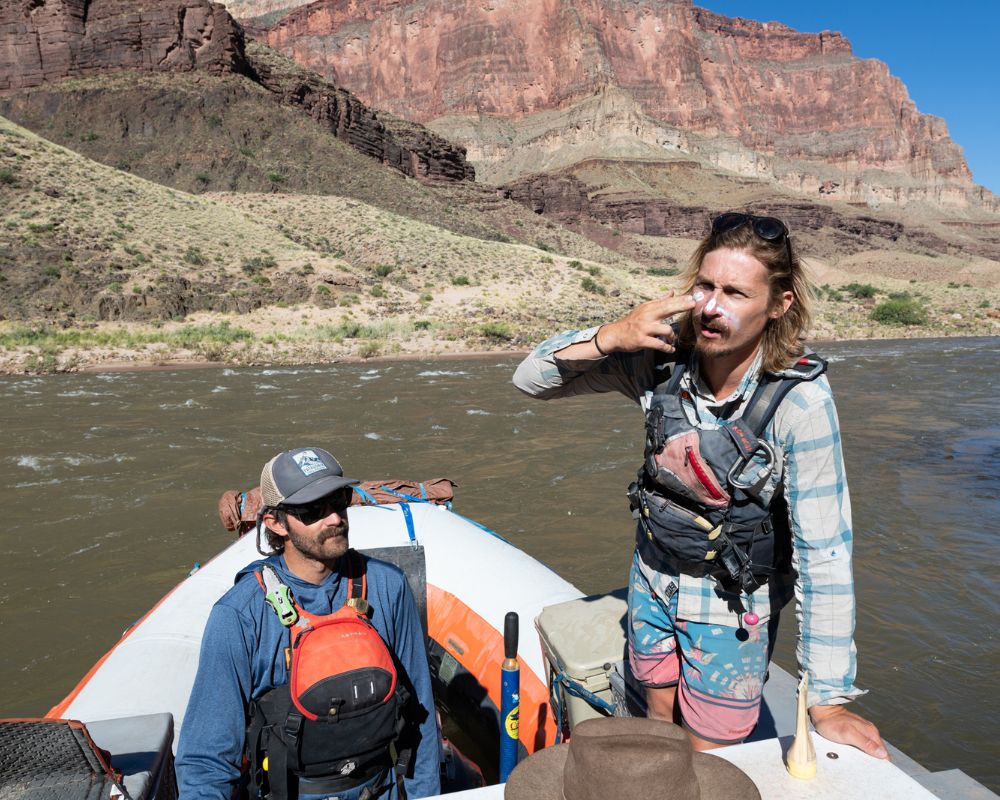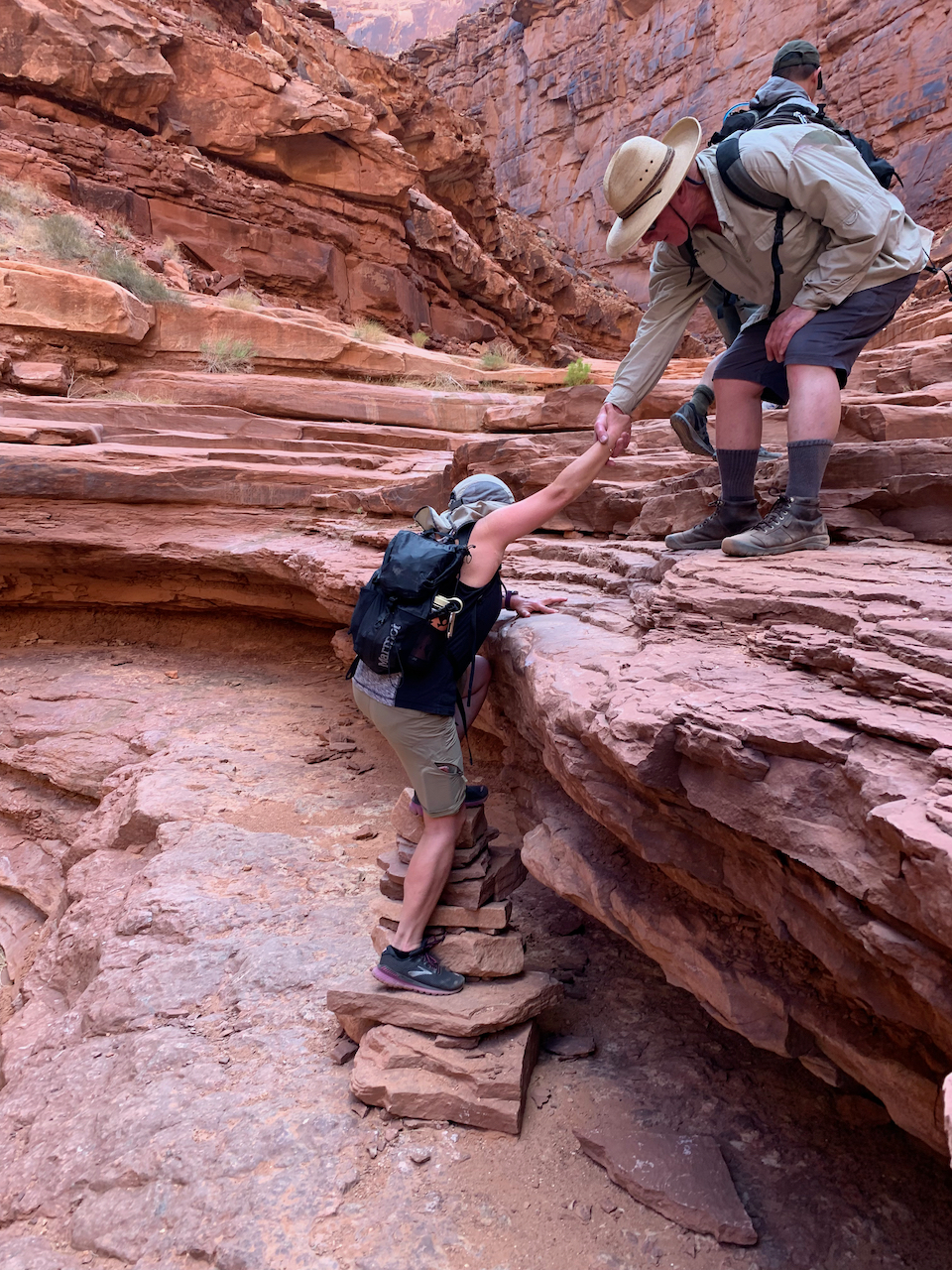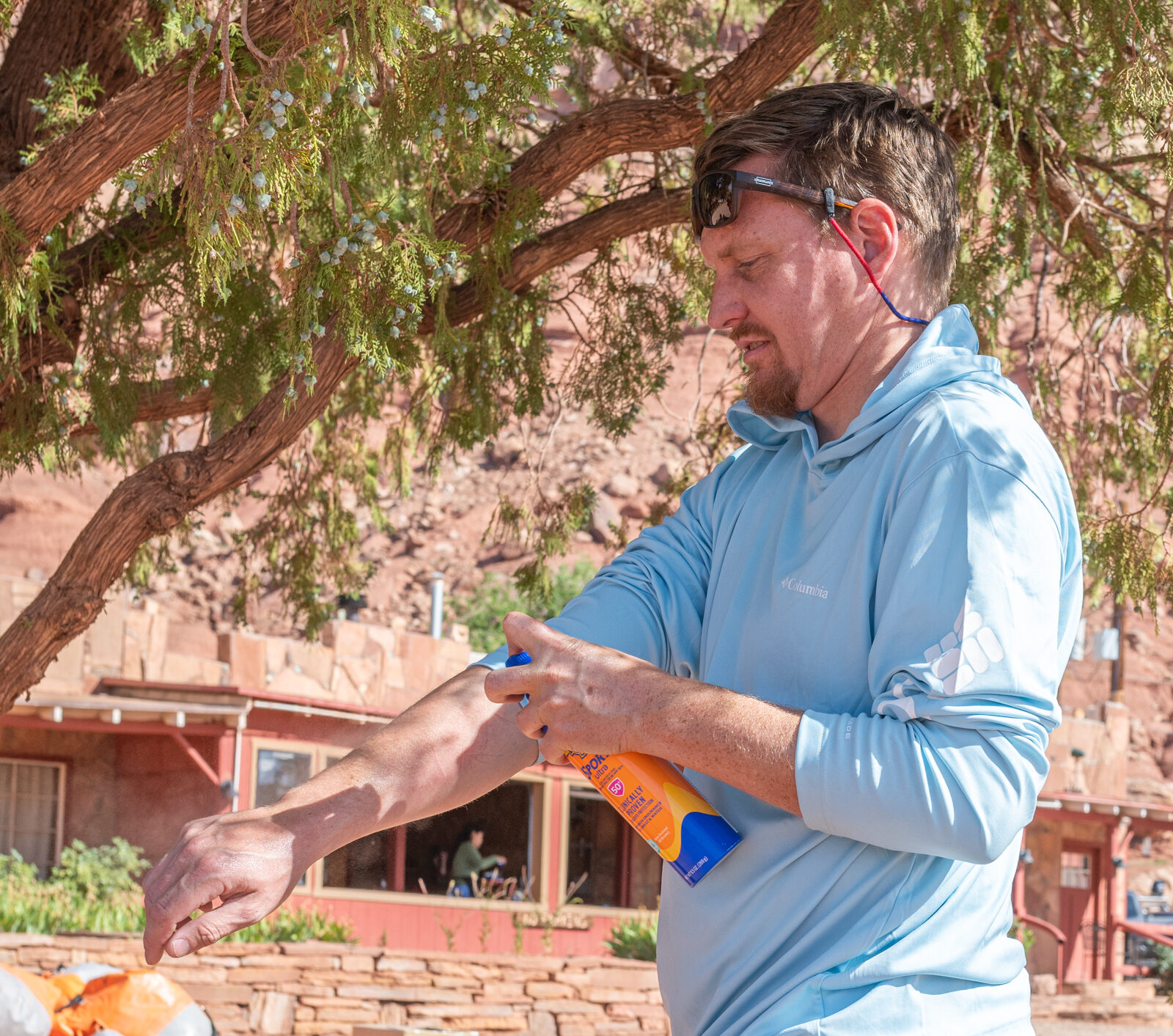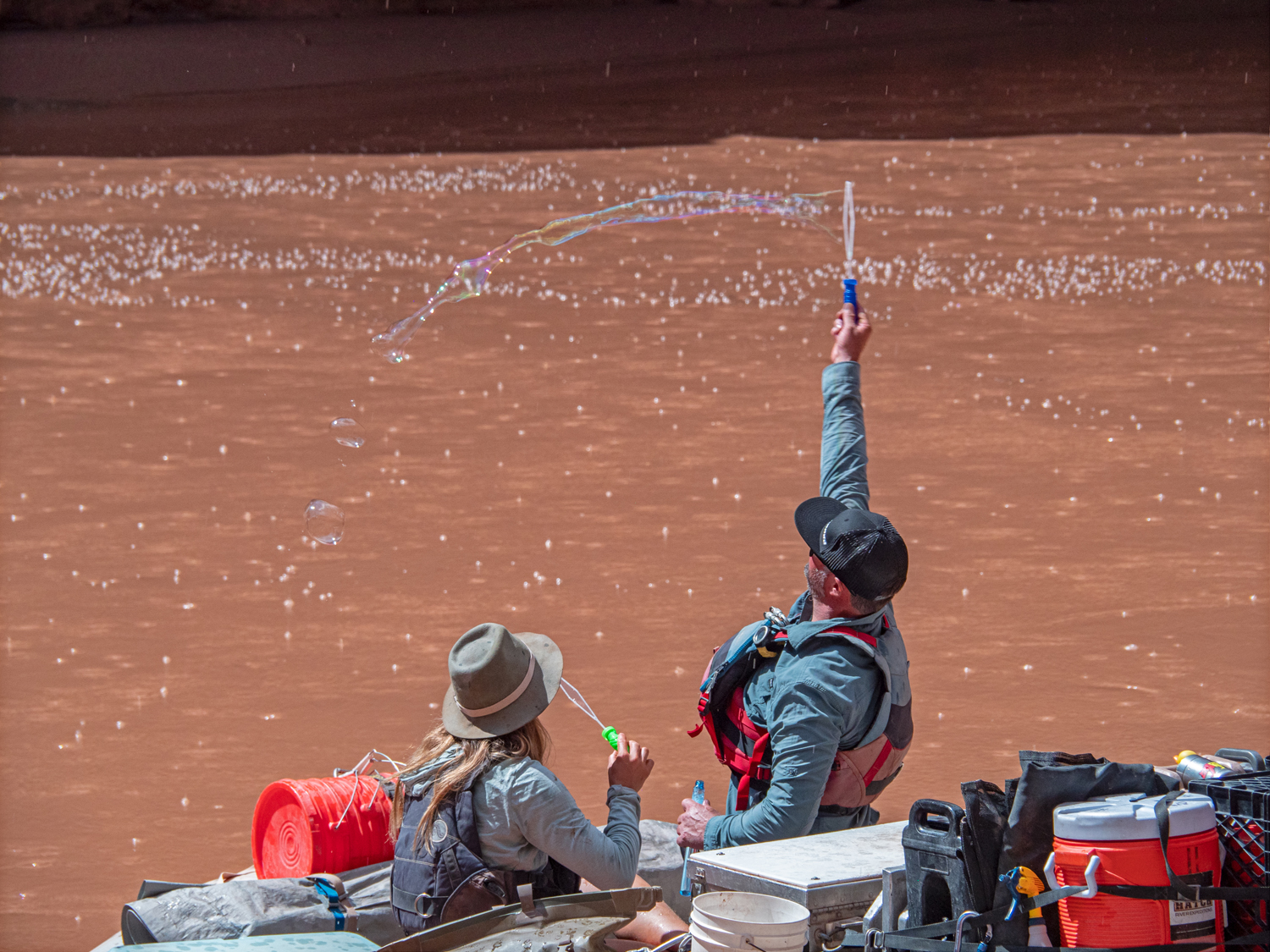As you prepare for your trip and double-check the Gear Checklist we provided!
You’ll notice we ask you to bring “Reef Safe” sunscreen and biodegradable soaps specifically.
No reefs are in Grand Canyon, but many ingredients in sunscreen and soap can be harmful to the ecosystems that call this place home.
We wanted to make sure you knew exactly what Reef Safe means so we can all aid in keeping the Grand Canyon at its healthiest and allowing future generations to continue to enjoy this incredible place.
Common ingredients in most sunscreens and soaps can have huge negative impacts on the ecosystems they are introduced to. Plants can develop impaired growth and issues for photosynthesis, impairing the plant’s DNA, which can then be passed down and cause deformities in the plant’s offspring. Animals can get damaged immune systems and harm their reproductive systems. Some soaps even damage septic tanks in homes and campgrounds because the chemicals harm the microorganisms that make up the bacteria septic tanks rely on to break down water waste.
Since Reef Safe and Reef Friendly labeling isn’t regulated, often, brands we think are nontoxic aren’t actually as safe as they are advertising. For example, mineral-based sunscreens are often used as a reef-safe alternative; however, even though they are better, they still contain some UV filters that can be harmful to aquatic ecosystems. Use mineral-based sunscreens if that is what is available, but the best way to determine how Reef Safe a product is to check the “active ingredients” label on the back.
The following list are ingredients that your sunscreen should NOT contain:
- Oxybenzone
- Octinoxate
- Octocrylene
- 4-methylbenzylidene camphor
- PABA
- Parabens
- Triclosan
- Any nanoparticles or “nano-sized” zinc or titanium (if it doesn’t explicitly say “micro-sized” or “non-nano” and it can rub in, it’s probably nano-sized)
- Any form of microplastic, such as “exfoliating beads”
It is also recommended that you get sunscreen sticks or lotions instead of the spray-on. The spray or misting sunscreens can be harmful if inhaled, depending on the ingredients. It can become overwhelming to try and read the labels, so also consider investing in Ultraviolet Protection Factor (UPF) sunwear. This includes UV-protective sun shirts and leggings, wide-brimmed hats, sunglasses, or umbrellas, which all help to keep the sun off your skin.
When it comes to soap, even our everyday use of soap is important to think about because some of the soapy water that goes down the drains in our homes makes its way to our soil, groundwater, rivers, and oceans. Considering that you will be using this soap right in the river, we want to ensure that the ingredients in the products used don’t harm animals or ecosystems within the Grand Canyon. Keep in mind that the streams in slot canyons are more sensitive to these chemicals than the main river stream is, so when you are bathing or washing make sure you stay in the main river and DO NOT go to side streams.
There are full lists online of ingredients to avoid in your soaps, but in general, avoid artificial fragrance and colors, phosphate, parabens, sodium lauryl sulfate and sodium laureth sulfate (SLS and SLES), and antimicrobial chemicals. We always recommend Dr. Bronner’s brand, but many brands work great, depending on your preference.
Find a list of other recommended soap brands on the 99Boulders website.
For both your sunscreen and soap, keep in mind the packaging and try to avoid single-use and plastic packaging as much as possible. Instead, look for products with reusable containers or packaging that are made of highly recycled or plant-based materials.
We all need to do our best to keep this beautiful place for others to visit and experience into the future.
Best Reef Safe Sunscreen:
Save the Reef Sunscreen Guide:
Biodegradable soaps:
- https://www.treehugger.com/eco-friendly-soap-5180861
- https://www.99boulders.com/best-biodegradable-soaps
Click here to learn more about Hatch River Expeditions packing list or read our FAQs.



